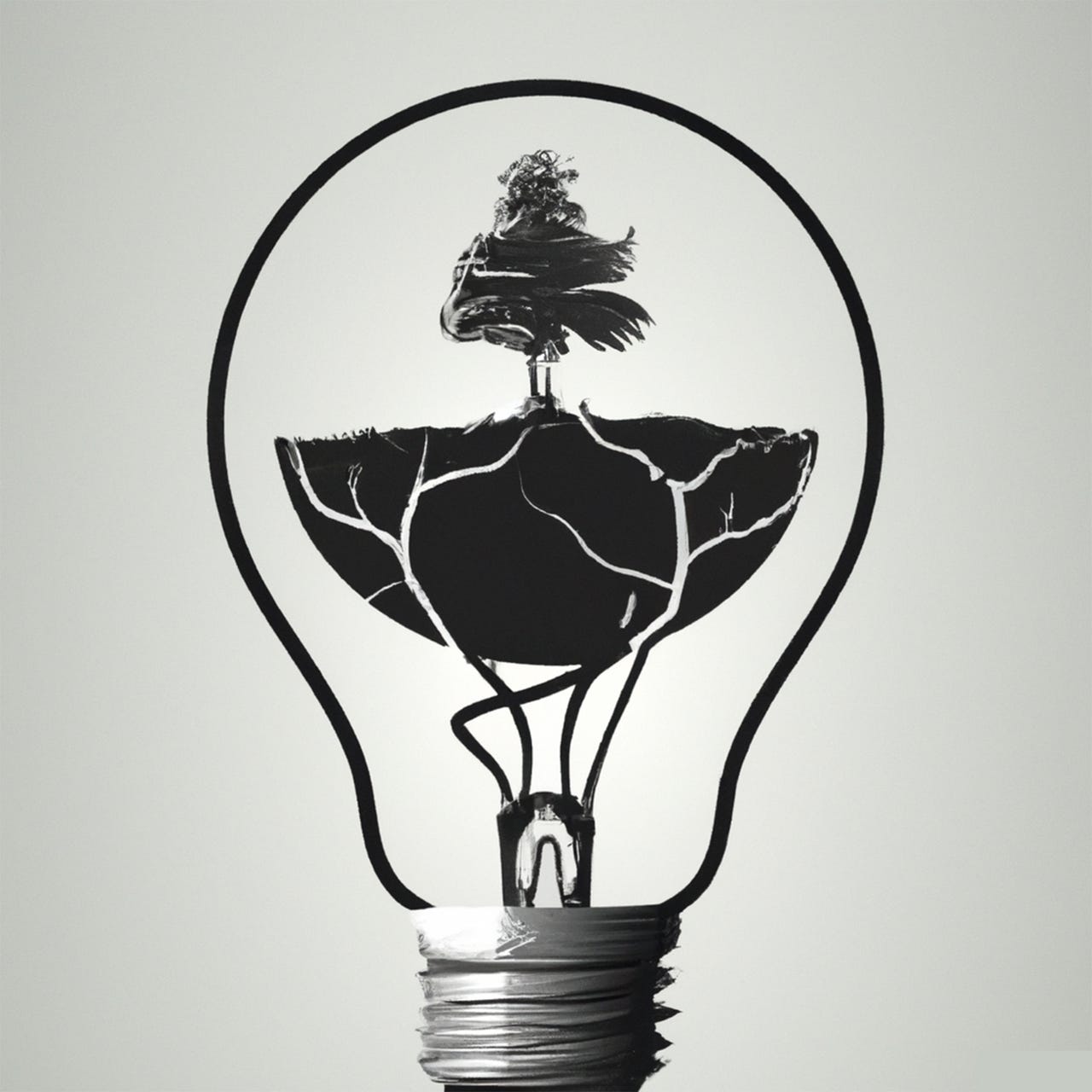Dear writer: Advice on conjuring good ideas
On using Substack as an intellectual proving ground, the secrets of writers from the Middle Ages, and where to look when you are creatively stuck
We asked
, who writes on Substack, for advice on finding great ideas. Brian is a social scientist and professor of global politics at University College London. He is the author of four books, including Corruptible: Who Gets Power and How It Changes Us, which includes interviews with torture victims, CEOs, cult leaders, and more.Brian’s Substack explores the mystery and marvel of the world we live in, and how evolutionary biology, history, neuroscience, anthropology, and philosophy relate to challenges we face today and our possible futures. He writes for The Atlantic, created the award-winning Power Corrupts podcast, and is a self-professed “history nerd,” offering guided tours in his local southern England. Read on for his advice, or listen to Brian read it aloud above.
Dear writer, where do good ideas come from?
Great writing is a conjuring trick. The reader watches, mystified, as a powerful idea appears on the page or the screen, fully formed, as if plucked from the ether. Poof! Where did it come from? A true magician never reveals their secret.
Meanwhile, the bad ideas are like dead rabbits, martyrs made when the magician failed to extricate them from the hat with skill and care, innocent victims of “practice makes perfect,” never to be seen or mentioned again.
But here’s the truth: a newsletter requires glimpses of those dead rabbits. They allow us to treat our Substacks as an intellectual proving ground, a place to try new tricks. But eventually, we all run out of rabbits, dead or alive, and nobody clicks “Subscribe” when looking at an empty hat.
So where do we get good ideas—or even mediocre ones—when we’ve run out? (A fair warning: If I had the perfect answer, I wouldn’t write just once a week and I’d have a hell of a lot more subscribers.) But there are two insights I’ve found useful. So here, among the initiated, I’ll reveal my secret.
In the Middle Ages, beautifully illustrated anthologies of writing were produced called florilegia. The name means “gathered flowers,” and these “flowers” were wise written snippets taken from sages past and present, smooshed together and bound. These were the original medieval mixtapes, an aggregation of insight, creativity, and knowledge. The creators of these books understood that all ideas are remixes—and that genius is relational.
Every writer is therefore a thief. But what we are guilty of is not a crime, but creativity. Ideas are additive. Einstein discovered relativity by riffing off and refuting existing scientific ideas, not by plucking an entirely new one from the ether. Hercule Poirot had a trusty sidekick because Agatha Christie was dazzled by Sherlock Holmes and Dr. Watson. She was inspired, then created something astonishingly original.
Every good idea I’ve ever had has come, in part, from someone else’s good idea. Two of my most-read Substack articles, “The Myth of the Secret Genius” and “Billionaires and the Evolution of Overconfidence,” emerged when I took a less familiar realm of knowledge—evolutionary biology, in this case—and combined it with my expertise on the nature of power. It created something fresh.
Concretely, this means that when I’m stuck, I take the florilegia approach: I read wise snippets from those who know things I don’t, contemplating ideas that are completely new to me. (I’ve recently been inspired by neuroscience ideas from
’s , ’s insights and observations in , and the consistently out-of-the-box thinking on science and psychology from ’s , to name a few.)Seeking out unfamiliar intellectual terrain isn’t always natural to us, because humans are reinforcement creatures who crave familiarity and loathe uncertainty or the unknown. As a result, we fall into the trap of reading writers who are most like ourselves, figuring that inspiration is most likely to flow from intellectual proximity. In my experience, that’s a mistake. Nobody wants a mixtape full of songs from the same band.
Every writer has deep expertise, parts of the world they intimately and intuitively understand. The best ideas, I’ve found, emerge when writers plant that knowledge somewhere a little different, an economist who brings game theory to sports, a poet who writes about politics, or a journalist who, every so often, looks inward and makes themselves the focus of their story. Take what you know and introduce it to something you don’t.
The best ideas, I’ve found, emerge when writers plant that knowledge somewhere a little different. Take what you know and introduce it to something you don’t.
Unfortunately, hastily arranged introductions don’t always work. Trying to force an idea into the ether so that you can pluck it out and plop it down onto the page is as effective as an insomniac trying to will themselves back to sleep.
This is the second lesson I’ve learned: to rely on a strategy known as “leisure-time invention.” It draws on the experiences of great thinkers past and present who tried, and failed, to explain the process by which they came up with their best ideas. Einstein swore that his mind was most inventive while playing the violin. The Wright brothers developed the prototype for their flying machine after seeing buzzards during a picnic. Galileo invented the pendulum clock while gazing at a chandelier swaying in a cathedral.
Henri Poincaré, a mathematical genius who paved the way for the discovery of chaos theory, toiled with a problem for weeks, to no avail. Then, one night, he wrote, “contrary to my custom, I drank black coffee and could not sleep.” Soon, “ideas arose in crowds; I felt them collide until pairs interlocked.” When he woke up, he marveled, “I had only to write out the results.” When he stopped trying to solve the problem, he solved it.
When I’m stuck, I take my dog for a walk. I let my mind wander. It’s unfocused thought, giving my brain a bit more space to experiment without a goal. Writing, then, is like learning to be a sponge that never gets wrung out, always observing, absorbing, thinking.
And when the rough blob of an idea flits into my mind, I capture it—not with paper and quill, like the more romantic figures of the past, but with a note on my phone or an email to myself. Sometimes the idea turns out to be a dud. Other times, it takes some time to mature, then collides with another rough blob of an idea months later.
It works. And I swear by it, because I’ve learned the hard way that a forced idea, willed into existence while glowering at a blank page, will almost always end up being a dead rabbit that never had a chance.
This is the 13th in a recurring series of longform writer advice, following Kristen Hawley’s advice on facing the behemoths, Hilary Fitzgerald Campbell’s advice on prioritizing your to-do list, Lauren Wolfe’s advice on tackling difficult stories, Holly Whitaker’s advice on writing like it matters, Lucy Webster’s advice on writing from lived experience, Scott Hines’s advice on cultivating connection in the internet age, Robert Reich’s advice on sharing your personality, Helena Fitzgerald’s advice on isolation, Alicia Kennedy’s advice on learning to listen, Kate Lindsay’s advice on creating trust with your readers, Anna Codrea-Rado’s advice on learning to celebrate how far you’ve come, and Mason Currey’s advice on creative growth.
Could you use some advice or inspiration from a fellow writer about creativity, motivation, and the writing life? Submit your question for consideration for a future advice column by leaving it in the comments below.










Share this post